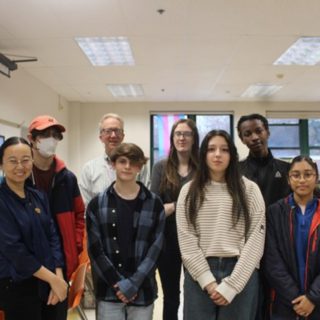Budget proposal threatens community

On Wednesday, March 13, the Regional School Committee rejected the proposed budget of $34.81 million for the 2025 fiscal year, which called for major cuts between the Amherst-Regional Middle School and High School.
According to Interim Superintendent Doug Slaughter, the budget fell $1.6 million below the $36.5 million needed to retain the current levels of staff and services into next year.
Prior to the school committee’s rejection of the budget on March 13, The Graphic reached out to ARHS faculty and administration to better understand what those cuts would look and feel like on a more personal level.
“My initial thought was sadness, and then, I need more information,” said ARHS art teacher Hannah Hartl. “Really why [is this happening] and what other efforts were made [to change it]?” Her perspective is one representative of many others in the community. But she wasn’t hopeless. “Any creative problem solving helps to encourage more of the same,” she noted.
Hartl said in a follow-up interview after the budget rejection that the proposed cuts push up against hte idea that “we truly value education in our community.” For Technology and Engineering Department Head Nat Woodruff, the driving questions are: “How can we do this equitably? What can we cut while keeping [student] experiences here the best possible experiences?”
Principal Talib Sadiq spoke for the administration. “We are currently trying to figure out how to minimize cuts the best we can, including the impacts these cuts will have on teachers and students, and our overall community,” he said.
Despite their opposition to the initial budget, Sadiq said that the blame shouldn’t land on the School Committee. “At the School Committee meetings when budgets are talked about, a lot of people are upset about it, and rightfully so, but I often think they’re upset with the wrong people,” said Sadiq.
This search for money has prompted some in the community to explore underutilized or overlooked resources. “This town prides itself on caring about public education, [so we need to] find out where the town is spending its money, and find out what the priorities are,” he said.
Fricke, “I think the money is out there, we just need to raise it and distribute it differently. It wouldn’t mean that it would somehow impoverish the state; it would make the state more sustainable and attractive.”
Since Amherst College is tax-exempt, many feel that the college should may “payment in lieu of taxes” to the public schools, as colleges like Williams have done and universities all over the city of Boston.
“We benefit from their existence, for sure, but financially we do not benefit from having them,” said Woodruff. “If we had a similar industry in town that was making as much money [and decided to contribute[, we would be a different school,” said Woodruff, “I think it would be fair for Amherst College to kick in a little bit for the community as a good faith effort.”
“We have a private college in this town, and they have over a billion dollars in endowment. We have the Flagship university in our town and yet we are still making these cuts in our public schools,” said Sadiq. “I think people should organize and or put pressure on the town, Amherst College and UMass to contribute more money so we should never have to make cuts.”
Staff’s primary concerns are not with their futures, but with the students. Fricke expressed he is worried about “the quality of our offerings to students” and has started to “question the fundamental infrastructure which is inequitable and causing our pain.”
To teachers’ distress, electives seem to be highest on the chopping block when cuts like these are proposed. “All elective courses are at risk, and the ones that are less signed up for are at risk. As an elective teacher, I fear losing electives completely,” said Hartl.
Woodruff agreed. “We really need humans to be creative and use [their knowledge] in creative ways, and that’s what electives can really do,” he said.














